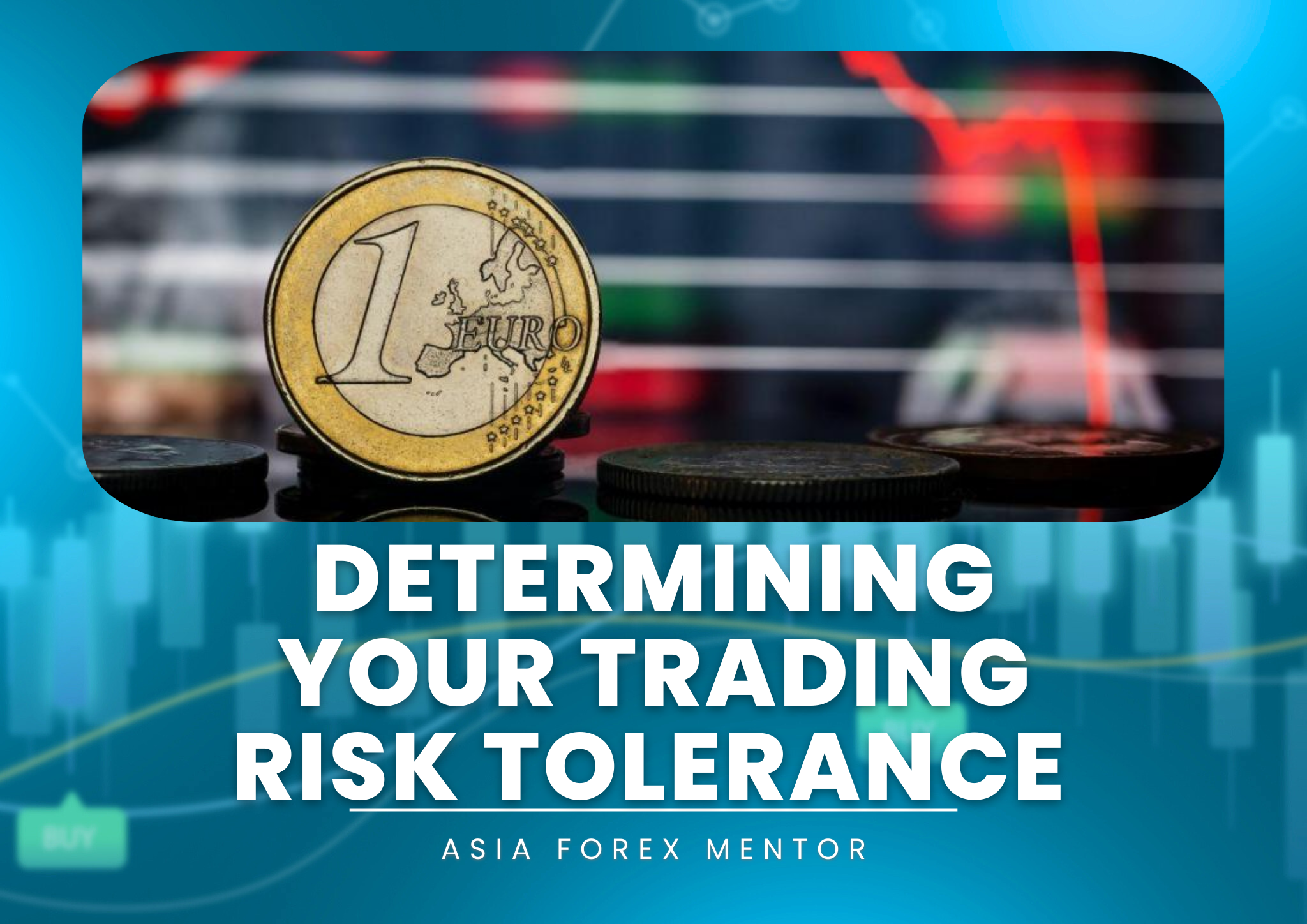
Many traders and investors use various strategies to make money in the financial market. Buying assets and holding many positions is one of the most common strategies. To carry out this strategy properly, each investor and trader is required to have a trading portfolio for better asset management.
Also read: Copy Trading
Contents
- What is a Trading Portfolio?
- Types of Trading Portfolios
- Asset Allocation in an Investment Portfolio
- Diversified Portfolio
- Risk Reduction in a Portfolio
- Managing your Portfolio
- Monitor your Portfolio
- Conclusion
- FAQs
What is a Trading Portfolio?
A trading portfolio is also known as an investment portfolio. It shows a collection of assets and can feature assets from various asset classes. These assets may include exchange-traded funds (ETF), mutual funds, bonds, stocks, cash, and cash equivalents, or even assets from other financial markets.

An investment portfolio allows traders to monitor the value of their investments at a glance. This can help investors make financial decisions and reassess their financial goals, just by looking at their investment portfolio.
Investors can choose to have all their investments in one portfolio for a general overview, or they can have different portfolios. This decision varies with the investment strategy, investment goals, and asset classes.
Types of Trading Portfolios
Many types of investment portfolios exist, and these portfolios are categorized by the traders’ approach toward investments.
Aggressive Portfolio
As the name implies, this is an aggressive approach toward investment. Traders with a high-risk tolerance use this approach. An aggressive portfolio is a portfolio that features high risks and high rewards. Traders with an aggressive portfolio put a high percentage of their portfolio in different industries in the financial market.
These kinds of portfolios are very unstable, and react poorly to market flunctations. The objective of an aggressive portfolio is to make a huge sum of money while taking a huge risk in the market. High risk assets like cryptocurrencies are common in an aggressive portfolio.
Aggressive investors look for businesses that are just getting started and have a unique value offer. The majority of them are infant companies because they have the potential for rapid growth. These kinds of organizations are usually found in the technology sector.
When it comes to establishing and sustaining an aggressive portfolio, risk management is crucial. The path to success in this sort of investment is to keep losses to a minimum and to take profits.
Defensive Portfolio
This is a portfolio that contains mostly defensive stocks. This kind of portfolio is protected from volatile market movements, which makes it difficult for traders and investors to lose money.
Defensive or non-cyclical stocks are the direct opposite of cyclical stocks. Cyclical stocks react sensitively to economic cycles. Non-cyclical stocks are known for performing well in both good and bad economic conditions.
Companies that produce essential survival products have the best defensive stocks. A good example of a defensive stock is consumer staples.
Many of these businesses also provide a dividend, which helps to reduce capital losses. For most investors, a defensive portfolio is the safest option.
Income Portfolio
An income portfolio is comprised of investments that produce revenue through dividends, rewards, or other sorts of payouts to shareholders.
Some defensive stocks could be added to an income portfolio, but they must be high-yielding stocks.
An income portfolio should be able to create cash flow for investors. Examples of income-generating investments include Master Limited Partnerships and Real Estate Investment Trusts (REITs). In exchange for preferential tax treatment, these corporations return a large portion of their income to investors. In particular, trusts offer a method to purchase property without having to deal with the inconveniences of property ownership.
This type of portfolio is affected by changes in economic conditions. Real estate is greatly affected by a recession and other economic factors.
An income portfolio can be a great way to supplement an income or retirement income.
Speculative Portfolio
This kind of portfolio is more risky than that of an aggressive one. A speculative portfolio can be classified as gambling. A major piece of investment advice to investors is to risk less than 10% of their portfolio on speculative investments.
IPOs (Initial Public Offerings) or stocks that are speculated to be takeover contenders are examples of speculative bets. This category includes technological or health-care companies that are at the verge of creating a single revolutionary product. A speculative move would be a fledgling oil business set to reveal its first output.
If you want to be successful with your speculative portfolio, you’ll need to complete the most investigation. It also necessitates a significant amount of effort. Speculative stocks aren’t your normal buy-and-hold investments, they’re more like trades.
Hybrid Portfolio
A hybrid portfolio is a that contains investments from more than one asset class. This portfolio is a diversified portfolio than contains various kinds of investments such as bonds, real estate, art, stocks, crypto and many more.
This portfolio usually features reliable shares such as some government bonds, and some hard asset like real estate investment trusts.
A hybrid portfolio would have a predetermined mix of stocks and bonds. This strategy provides diversification across a variety of economic groups. This is advantageous in and of itself because historically, stocks and fixed revenue commodities have had a negative connection.
Asset Allocation in an Investment Portfolio
An asset allocation is a combination of assets from different asset classes. Most professional investors advise new investors to always choose their invested assets properly. There are three main asset classes for investors to choose from. They are stocks, bonds, and cash.
Stocks can also be called equities. A stock is a financial instrument that symbolizes ownership of a portion of a company. This entitles the stockholder to a share of the corporation’s assets and earnings according to the amount of stock they possess. “Shares” are the pieces of stock.
Bonds can also be referred to as fixed-income securities. A bond is a fixed-income security that reflects a loan from an investor to a debtor (usually a corporation or government). Corporations, counties, states, and sovereign governments all utilize bonds to fund operations. Bondholders are the issuer’s debtholders, or creditors.
New money should note that there are many other asset classes and they are known as alternatives. These assets include real estate, commodities, and lots more. Each asset class has its own unique potential and market risk. The general growth of your investment portfolio depends on your investment strategy, and market conditions.
Many variables might have an impact on how you allocate assets and construct your portfolio. Your risk tolerance and investment period are two crucial factors that determine profitability.
Conservative Asset Allocation
The portfolio will often contain a large amount of cash and bonds, with the primary purpose of maintaining current wealth. This is a low-risk strategy since cash doesn’t depreciate, and while the price of a bond investment may fluctuate, if you keep a bond until it expires, you’ll typically get your initial investment amount back, plus interest payments.
Moderate Asset Allocation
This type of allocation technique will often contain more equities than the conservative strategy, with the goal of achieving some growth while maintaining a moderate level of risk.
Aggressive Asset Allocation
A portfolio with a high ratio of equities and a lower ratio of cash and bonds is considered aggressive. Stocks have a higher potential for profit, but they also have a higher risk and a high possibility of losses.
Also Read: Managed Forex Accounts
Diversified Portfolio
A diversified portfolio can also be referred to as diversification. Diversification means investing in various asset classes from different industries to manage or lower your risk. Instead of putting all your eggs in one basket by buying stock in a single company or industry, diversify while investing. Buy stocks of multiple companies from multiple industries. You can put together a well balance portfolio in many ways. One option is to invest in exchange-traded funds (ETFs) and mutual funds that automatically rebalances, which gives broad market exposure and access to different equities and bonds.

Risk Reduction in a Portfolio
There are various risk-reduction measures that may be used in a portfolio. we will go through some of them.
Using a stop loss is one of the best ways to reduce your risks in the market. When a particular loss level is reached, a stop loss will automatically halt your transactions.
Portfolio rebalancing is a very common portfolio management technique. When circumstances change, rebalancing is the approach to altering your portfolio. When financial conditions change, for instance, you may switch from development to value stocks.
By adding less risky assets to your portfolio. Having fewer risky assets in your portfolio can help you lower your risks. Bonds and dividend stocks are examples of these assets.
Diversifying your portfolio is key. buying in a single asset is riskier than investing in a portfolio of assets. You should do a good job with the diversity. Creating a portfolio of agricultural commodities, for example, is not diversification because it is only one industry.
Managing your Portfolio
There are several factors to keep an eye on and some management tasks you may wish to conduct from time to time once you’ve constructed a diverse portfolio that meets your goal.

Examine your performance and check up on your investments from time to time to see how they’re performing. How are they faring in comparison to the rest of the market?
Keep yourself up-to-date and keep an eye on the news and events around the firms and sectors in which you have a stake. There might be emerging patterns or potential future developments that might have an impact on your investments.
Keep an eye on your asset allocation and examine your investment mix on a regular basis to ensure that it is consistent with your investing goals and risk tolerance. There are some tools to assist you with portfolio and asset allocation analysis.
Rebalance As the value of several of your holdings rises and others decline, the balance of your portfolio may stray from your initial goal. You may need to rebalance it on a regular basis to keep your asset mix where you want it.
Adapt to the changes in your life. Your asset allocation may shift over time. It’s usual for people approaching retirement to want to limit risk and maintain their funds, for example. Other life events, such as having children, receiving a raise, or moving employment, might have an influence on your investment objectives. If this is the case, you should consider changing your asset allocation mix.
Monitor your Portfolio
As previously said, none of these models are flawless. Diversifying your trades is often misunderstood to mean that you will always earn money. It’s true that you may lose money in a diversified portfolio much more often than you can in a single asset.
As previously said, you should put brakes in place to minimize the amount of money you lose.
A hedge fund is a fantastic illustration of this since it almost brought the financial markets in the United States to their knees. Long Term Capital Management was a strong hedge firm with three Nobel Laureates among its partners. To create the systems, the fund had access to top-tier Ph.D. scientists.
Conclusion
Anybody who wishes to create wealth in the financial market must first develop a portfolio. A portfolio helps monitor various investments in one overview. Every investor needs a portfolio, and how he or she decides to go about creating a portfolio depends on the strategy being implemented.

FAQs
How do I make a trading portfolio?
Selecting the Most Appropriate Investment Strategy. Determine the type of assistance you require. Make sure the account you pick satisfies all of your goals. Choose the best investment for your risk tolerance level. Determine the best investment mix. Purchasing a new asset is a necessary step in achieving the intended goals. Guide your investment choices.
How do I make a trading portfolio?
Choosing the right investment plan Determine what support you need. Make sure the account you choose meets all those objectives. Select the best investment for your level of risk tolerance. Find the correct investment allocation. Investing in a new asset is an essential step to achieve the desired results.
What are asset classes?
An asset class is a collection of financial products with comparable financial attributes and market behavior. We may usually divide these tools into those that deal with physical assets and those that deal with financial ones. Assets in the same asset class are frequently subject to the same rules and regulations, although this is not always the case. Contracts on an asset, for example, are frequently classified as part of the very same asset class as the underlying instrument, but they are governed by distinct rules.
What are mutual funds?
A mutual fund is a business that pools money from a number of individuals and reinvests it in stocks, bonds, and other assets. The portfolio refers to the fund’s total holdings of stocks, bonds, and other assets. Shares, which reflect a portion of the fund’s holdings, are owned by each investor.
What are exchange-traded funds?
An ETF (exchange-traded fund) is a collection of assets whose securities are traded on a stock market. They blend the characteristics and various advantages of stocks, mutual funds, and bonds. ETF shares, like individual stocks, are traded each day at varying prices based on buyers and sellers.







